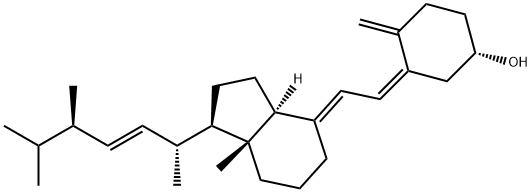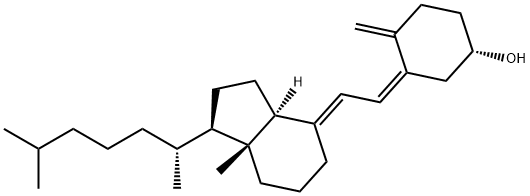4-Deoxypyridoxine hydrochloride
- CAS NO.:148-51-6
- Empirical Formula: C8H12ClNO2
- Molecular Weight: 189.64
- MDL number: MFCD00051296
- EINECS: 205-714-8
- SAFETY DATA SHEET (SDS)
- Update Date: 2025-08-20 16:56:24

What is 4-Deoxypyridoxine hydrochloride?
Description
4-deoxy Pyridoxine (DOP) is a vitamin B6 antimetabolite with diverse biological activities. It inhibits transport of pyridoxine , pyridoxal, and pyridoxamine in and reduces growth of S. carlsbergensis cells. DOP inhibits sphingosine-1-phosphate (S1P) lyase and reduces cyclic stretch-induced apoptosis in alveolar epithelial MLE-12 cells. DOP (5 mg, i.p.) reduces lysyl oxidase activity by 26% and reduces collagen and elastin crosslinking, resulting in limb abnormalities in chick embryos. It decreases latency to first seizure in mice (ED50 = 1 mmol/kg) and increases the occurrence and duration of myoclonic responses in baboons with photosensitive epilepsy. DOP reduces TNF-α and IL-6 production in mice infected with T. spiralis.
Chemical properties
Solid
The Uses of 4-Deoxypyridoxine hydrochloride
4-Deoxypyridoxine is the deoxy analogue of Pyridoxine (P991735). 4-Deoxypyridoxine is a vitamin B6 antimetabolite; 4-Deoxypyridoxine can induce a deficient status that alters the function and ultrastructure of EC similar to vascular disease.
What are the applications of Application
4-Deoxypyridoxine hydrochloride is a vitamin B6 antagonist
Properties of 4-Deoxypyridoxine hydrochloride
| Melting point: | 274°C(dec.)(lit.) |
| storage temp. | Inert atmosphere,Room Temperature |
| solubility | DMSO (Slightly, Heated), Methanol (Slightly, Heated) |
| form | neat |
| form | Solid |
| color | White to Pale Red |
| Stability: | Hygroscopic |
| CAS DataBase Reference | 148-51-6(CAS DataBase Reference) |
Safety information for 4-Deoxypyridoxine hydrochloride
| Signal word | Warning |
| Pictogram(s) |
 Exclamation Mark Irritant GHS07 |
| GHS Hazard Statements |
H302:Acute toxicity,oral H315:Skin corrosion/irritation H319:Serious eye damage/eye irritation H335:Specific target organ toxicity, single exposure;Respiratory tract irritation |
| Precautionary Statement Codes |
P261:Avoid breathing dust/fume/gas/mist/vapours/spray. P280:Wear protective gloves/protective clothing/eye protection/face protection. P301+P312:IF SWALLOWED: call a POISON CENTER or doctor/physician IF you feel unwell. P302+P352:IF ON SKIN: wash with plenty of soap and water. P305+P351+P338:IF IN EYES: Rinse cautiously with water for several minutes. Remove contact lenses, if present and easy to do. Continuerinsing. |
Computed Descriptors for 4-Deoxypyridoxine hydrochloride
New Products
4,4-Difluoropiperidine hydrochloride tert-butyl 9-methoxy-3-azaspiro[5.5]undecane-3-carboxylate Indole Methyl Resin N-Isopropylurea N,N-Dicyclohexylcarbodiimide(DCC) MELDRUMS ACID 5-METHYLISOXAZOLE-4-CARBOXYLIC ACID Magnessium Bis glycinate Zinc ascorbate 1-bromo-2-butyne 2-acetamidophenol 9(10H)-anthracenone Erythrosin B, 4-Piperidinopiperidine 2-((4-morpholinophenylamino) (methylthio) methylene) malononitrile 2,4-dihydroxybenzaldehyde 3-(4-morpholinophenylamino)-5-amino-1H-pyrazole-4-carbonitrile Methyl 2-methylquinoline-6-carboxylate 2,6-dichloro-4-nitropyridine 4-Bromo-2-chlorobenzonitrile 2-(benzylamino)acetic acid hydrochloride 4-(tert-Butoxycarbonylamino)but- 2-ynoic acid 3,4-dihydro-2H-benzo[b][1,4]dioxepine 1-Phenyl-1-cycloprppanecarboxylicacidRelated products of tetrahydrofuran








You may like
-
 148-51-6 Pyridoxine Impurity B HCl 98%View Details
148-51-6 Pyridoxine Impurity B HCl 98%View Details
148-51-6 -
 4-Deoxypyridoxine Hydrochloride CAS 148-51-6View Details
4-Deoxypyridoxine Hydrochloride CAS 148-51-6View Details
148-51-6 -
 Pyridoxine Impurity B CASView Details
Pyridoxine Impurity B CASView Details -
 4-Deoxypyridoxine hydrochloride CAS 148-51-6View Details
4-Deoxypyridoxine hydrochloride CAS 148-51-6View Details
148-51-6 -
 3-(4-amino-1-oxoisoindolin-2-yl)-1-methylpiperidine-2,6-dione 98%View Details
3-(4-amino-1-oxoisoindolin-2-yl)-1-methylpiperidine-2,6-dione 98%View Details -
 20677-73-0 (2,2-diethoxyethyl)methylamine 98%View Details
20677-73-0 (2,2-diethoxyethyl)methylamine 98%View Details
20677-73-0 -
 3-(4-(hydroxyamino)-1-oxoisoindolin-2-yl)piperidine-2,6-dione 98%View Details
3-(4-(hydroxyamino)-1-oxoisoindolin-2-yl)piperidine-2,6-dione 98%View Details -
 57381-49-4 2-bromo-4-chlorobenzonitrile 98%View Details
57381-49-4 2-bromo-4-chlorobenzonitrile 98%View Details
57381-49-4
